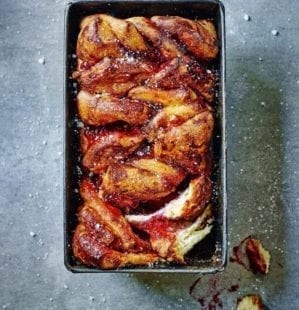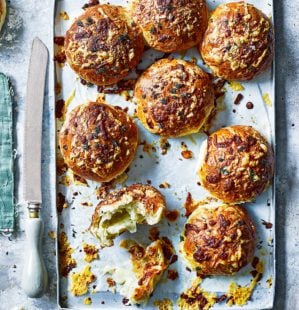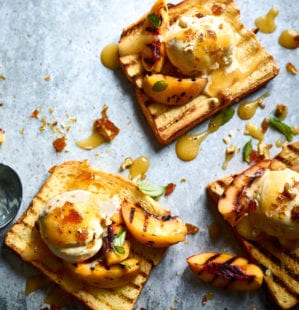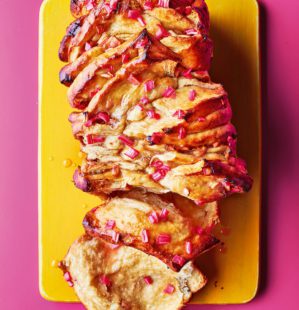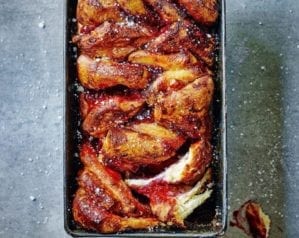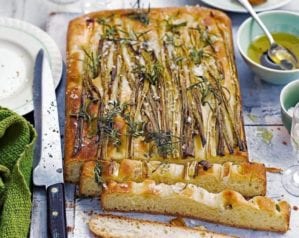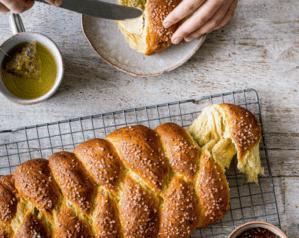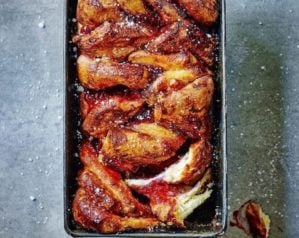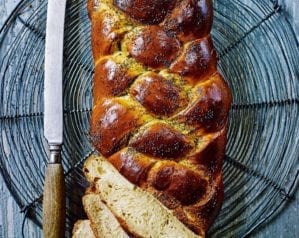
Brioche dough
- Published: 13 Jul 23
- Updated: 25 Mar 24
“Making brioche will make you feel incredibly accomplished and your kitchen smell incredible. It’s also easy – you just have to have a little patience. It’s the most beautifully glossy dough when it all comes together,” says Anna Higham, pastry chef, baker and author of The Last Bite (DK £22).
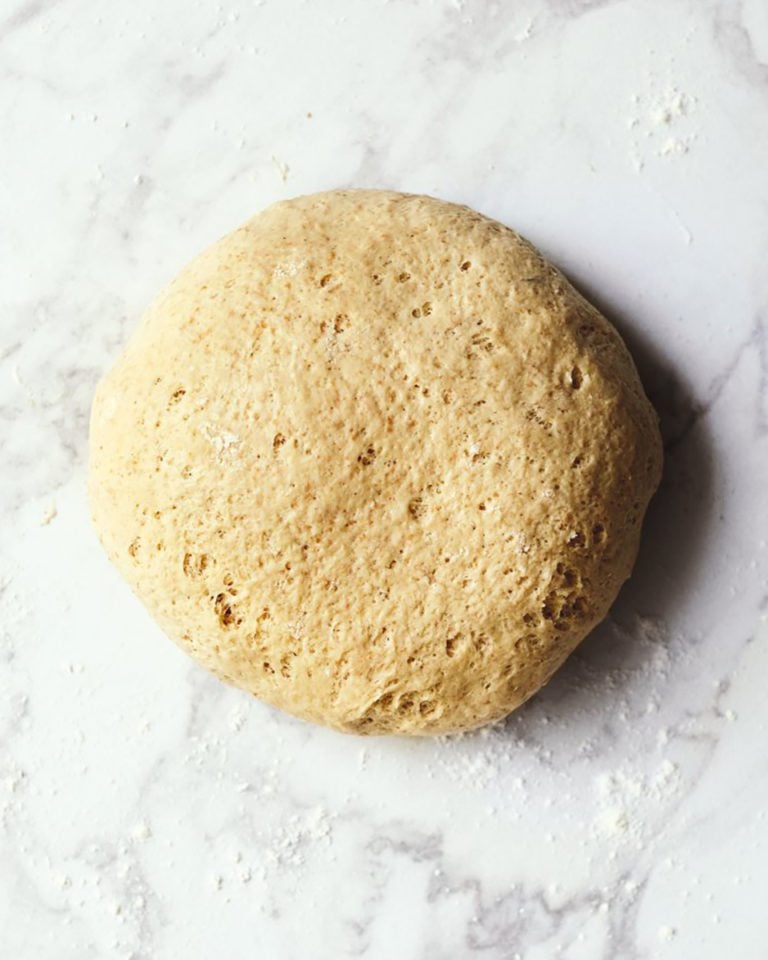
Use your dough to make Anna’s incredible plum and apricot brioche tart.
-
Makes enough for 2 large tarts or loaves, each serving 8
-
Hands-on time 45 min, plus at least 2 hours proving
Ingredients
- 210g whole milk
- 120g strong wholemeal bread flour
- 150g free-range eggs (about 3 – see tips)
- 5g fast-action/easy bake dried yeast
- 400g strong white bread flour
- 50g caster sugar
- 6g salt
- 230g unsalted butter, at room temperature
- Vegeable oil to grease
Method
- In a small saucepan, whisk 120g of the milk with 120g water and the wholemeal flour, then cook over a medium heat. The flour will thicken quickly to form a thick paste like a roux. Cook the mixture for 2-3 minutes, stirring constantly. Use a rubber spatula to scrape the mixture from the pan into the bowl of a stand mixer with a dough hook. Spread the mix out a little so it cools slightly.
- After a few minutes, add the remaining milk and the eggs along with the dried yeast. You don’t need to warm the milk as the heat from the roux will warm it naturally. Add the white flour, sugar and salt. Mix on a medium speed with a dough hook for 5-8 minutes. It should come together as a dough but will still look quite raggedy and wet. Scrape down the bowl to make sure nothing is sticking to the bottom, then leave to rest for 10 minutes. This will allow the dough to relax, the flour to carry on absorbing the liquids gently and the gluten to build passively.
- Mix for another 5 minutes on a medium-high speed. The dough should now feel cohesive and have a good stretch. Keeping the mixer on a medium speed, start to add the butter, about a tablespoon at a time. Wait for each addition to be mostly incorporated before adding the next. This will take a little time. If the mixer and/or dough are getting very hot, rest them for 5 minutes before continuing. Once all the butter is incorporated, scrape the dough onto your worktop and shape it into a smooth ball (a plastic pastry scraper is a great tool for this; they are a super useful tool for any baker).
- Transfer the dough to a lightly oiled rectangular container and either cover with a lid or a damp tea towel. Use a marker or a bit of masking tape to mark the top of your dough on the outside of your container. This will help you to judge the dough’s volume. Put the dough in a warm spot away from any draughts; I often sit it in the microwave (turned off) to keep it at a consistent temperature. Allow the dough to rise to just under double (45 minutes to 1 hour, depending on your kitchen), then transfer to the fridge for at least 1 hour or as long as overnight.
- Now you have your base dough, the world is your oyster. If you want a brioche loaf, just roll the rested dough into a loaf shape, leave to prove in a loaf tin until doubled in size, then bake for 35-40 minutes at 190°C fan/gas 6.5. You can make Swedish-inspired cinnamon or cardamom buns, buns topped with custard and fruit, brush the dough with a herby, garlicky butter and twist into decadent garlic bread, or even divide the dough into small balls and fry as doughnuts.
- Recipe from August 2023 Issue
Nutrition
- Calories
- 205kcals
- Fat
- 11g (6.5g saturated)
- Protein
- 4.8g
- Carbohydrates
- 21g (3.2g sugars)
- Fibre
- 1.3g
- Salt
- 0.3g
delicious. tips
Don’t waste it: Weighing the eggs helps you get a more consistent dough. If you need to crack 4 eggs to get 150g and find yourself with a little more than you need, simply put this to the side and use to glaze the brioche just before baking.
Making sure the dough is well mixed and developed before adding the butter (then adding that butter methodically) are the keys to success.
You can freeze the dough at the end of step 4. Simply transfer to an airtight container, try to keep the shape when transferring, and freeze for up to one month. When you want to use it just defrost in the fridge overnight.
“I’ve added a good amount of wholemeal flour in the form of a tangzhong – a method borrowed from Chinese and Japanese baking where you precook a portion of the flour in water and milk. It yields the fluffiest breads and works incredibly well with the wholemeal flour, as it fully hydrates and softens the bran, making it much easier to incorporate.” Anna Higham
Buy ingredients online
Rate & review
Rate
Reviews
Subscribe to our magazine
Food stories, skills and tested recipes, straight to your door... Enjoy 5 issues for just £5 with our special introductory offer.
Subscribe
Unleash your inner chef
Looking for inspiration? Receive the latest recipes with our newsletter

